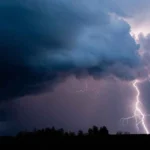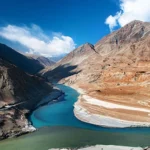
The Andes Mountains is a mountain range located in South America that stretches from Venezuela to the tip of South America. The Andes Mountains is the longest mountain range in the world, and is also the highest mountain range outside of Asia. The Andes Mountains is home to a wide variety of wildlife and is a popular destination for hikers, climbers, and other outdoor enthusiasts. The Andes Mountains is also home to many indigenous cultures and is a source of inspiration for writers, artists, and filmmakers. This essay will discuss the history, geography, and culture of the Andes Mountains.
History
The Andes Mountains are believed to have formed over 40 million years ago when the South American Plate began to move away from the Nazca Plate. The collision of the two plates caused the formation of the mountain range. Since then, the Andes Mountains have been shaped by volcanic activity and glaciation.
The first humans to inhabit the Andes Mountains were the Chibcha people, who arrived around 2000 BC. The Chibcha people were hunter-gatherers and they built large stone monuments and burial sites. They also developed complex agricultural systems and built networks of roads and trade routes.
The Incan Empire was the most advanced of all the cultures in the Andes Mountains. The Incans built large cities and developed a complex system of government and religion. They also built terraces and irrigation systems for farming and developed a system of writing. The Incans were eventually conquered by the Spanish in the 16th century.
Geography
The Andes Mountain range spans 7,000 km from Venezuela to the tip of South America. It is the longest mountain range in the world and the highest mountain range outside of Asia. The highest point in the Andes is Aconcagua, which stands at 6,962 meters.
The Andes Mountains are divided into three sections: the Northern, Central, and Southern Andes. The Northern Andes are located in Venezuela, Colombia, and Ecuador and are the most heavily populated and developed part of the mountain range. The Central Andes are located in Peru, Bolivia, and Chile and are home to some of the highest peaks in the range. The Southern Andes are located in Argentina and are the least populated and developed part of the range.
The Andes Mountains has a wide variety of climates and ecosystems. The higher elevations have a cold, dry climate, while the lower elevations have a warm, humid climate. The range is home to a wide variety of plants and animals, including llamas, alpacas, condors, and pumas.
Culture
The Andes Mountains is home to a rich and varied culture. Many of the cultures in the Andes have remained unchanged for centuries and are still practiced today.
The Incan Empire was the most advanced and influential of all the cultures in the Andes Mountains. The Incans had a complex system of government and religion and built large cities and terraces for farming. Many of their customs and traditions are still practiced today, such as the drinking of chicha, a fermented corn beverage.
The Quechua are the largest ethnic group in the Andes. They are descendants of the Incan Empire and have maintained their language and customs for centuries. The Quechua are known for their colorful clothing and weaving, and their traditional music and dance.
The Aymara are another ethnic group in the Andes. They are known for their traditional music and art, and their skill in weaving and pottery. The Aymara are also known for their traditional festivals, such as the Inti Raymi, which celebrates the winter solstice.
The Andes Mountains is a mountain range located in South America that stretches from Venezuela to the tip of South America. The Andes is home to a wide variety of wildlife and is a popular destination for hikers, climbers, and other outdoor enthusiasts. The Andes Mountains is also home to many indigenous cultures and is a source of inspiration for writers, artists, and filmmakers.









